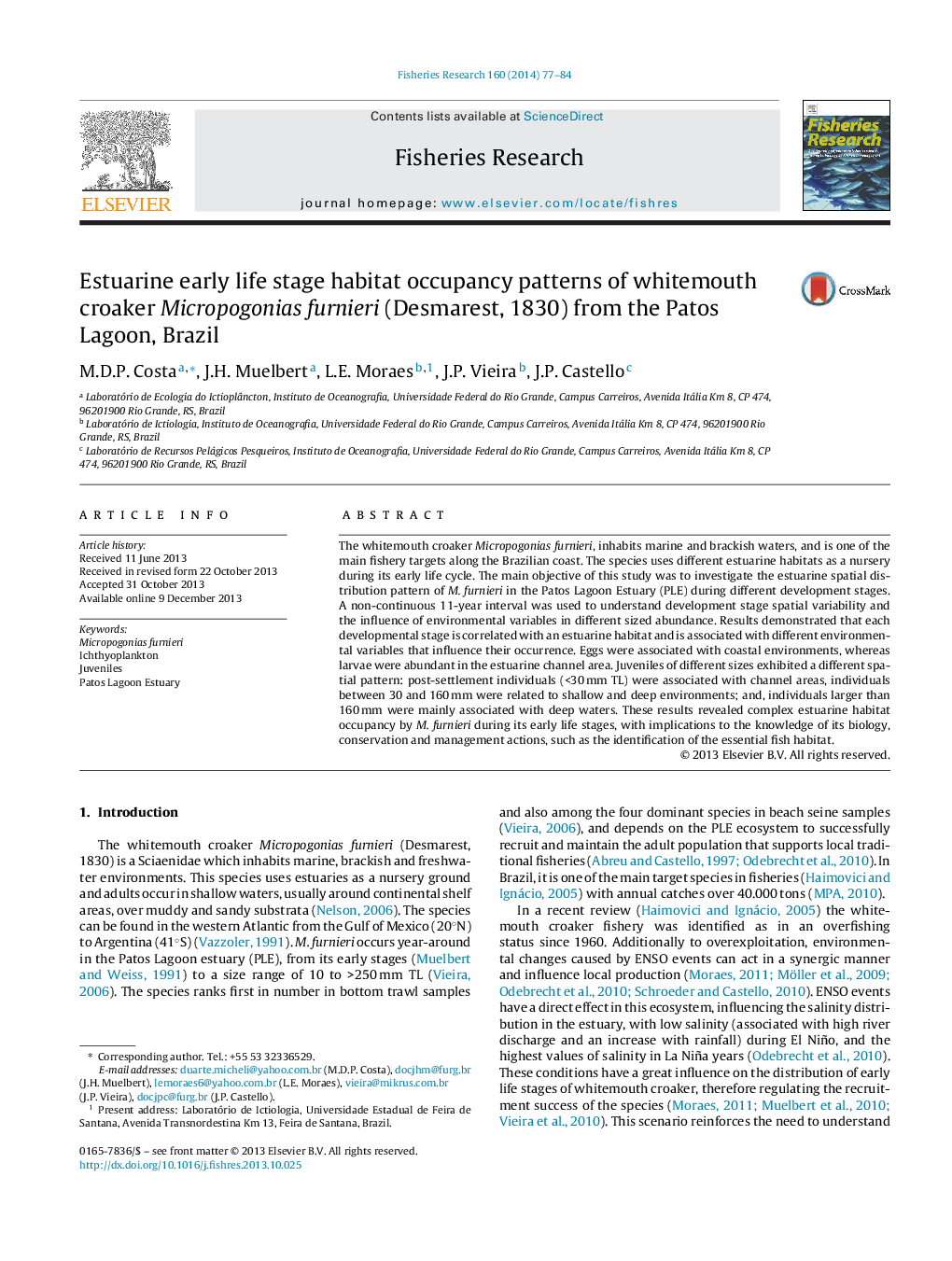| Article ID | Journal | Published Year | Pages | File Type |
|---|---|---|---|---|
| 4542874 | Fisheries Research | 2014 | 8 Pages |
•Eggs were related to coastal environments and larvae to all estuarine channel area.•Each juvenile size ecological taxa exhibited a different spatial pattern.•Salinity and temperature have a positive effect on eggs and larvae abundance.•Abundance of each size ecological taxa was determined by different abiotic factors.
The whitemouth croaker Micropogonias furnieri, inhabits marine and brackish waters, and is one of the main fishery targets along the Brazilian coast. The species uses different estuarine habitats as a nursery during its early life cycle. The main objective of this study was to investigate the estuarine spatial distribution pattern of M. furnieri in the Patos Lagoon Estuary (PLE) during different development stages. A non-continuous 11-year interval was used to understand development stage spatial variability and the influence of environmental variables in different sized abundance. Results demonstrated that each developmental stage is correlated with an estuarine habitat and is associated with different environmental variables that influence their occurrence. Eggs were associated with coastal environments, whereas larvae were abundant in the estuarine channel area. Juveniles of different sizes exhibited a different spatial pattern: post-settlement individuals (<30 mm TL) were associated with channel areas, individuals between 30 and 160 mm were related to shallow and deep environments; and, individuals larger than 160 mm were mainly associated with deep waters. These results revealed complex estuarine habitat occupancy by M. furnieri during its early life stages, with implications to the knowledge of its biology, conservation and management actions, such as the identification of the essential fish habitat.
